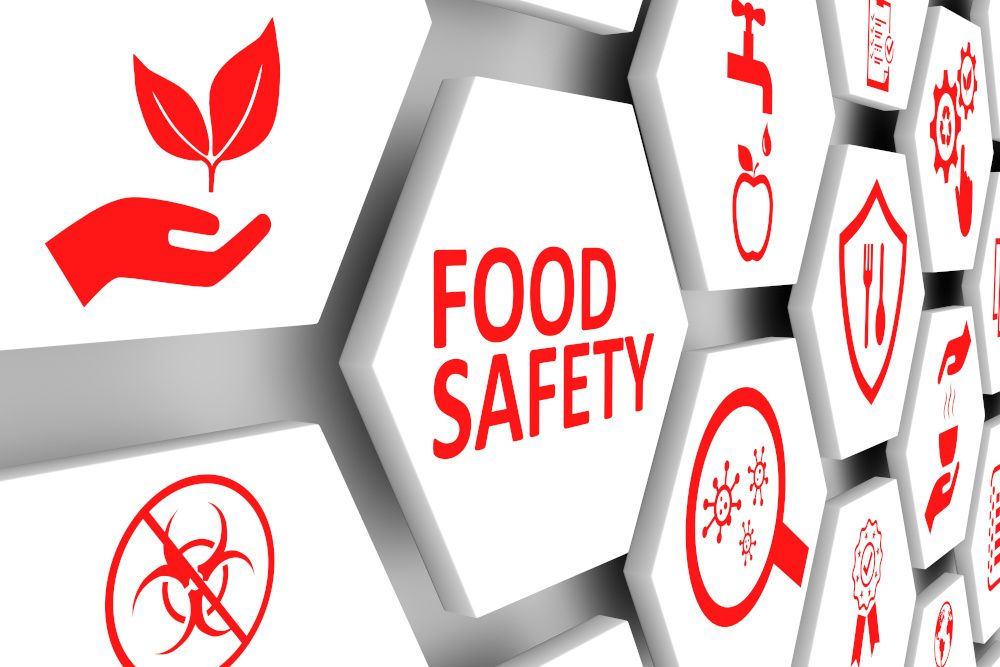5 Tips for creating a sustainable food safety management system
One expert explains why sustainability and food safety go hand in hand.
One of the significant aspects of sustainable development goals is achieving consistent food safety. Both sustainability and food safety go hand in hand. In fact, food safety is one of the top priorities of the produce sector to resolve world hunger.
In the sustainable development goals laid out by the United Nations, countries have started to become more aware of the problem of food waste. The organization emphasized that at least a third of the world’s food is wasted, contributing to the lack of supply of food for some nations1. This problem has led to movements seeking more sustainable operations in all industries.
One primary solution identified by the food industry to resolve sustainability and food security is emphasizing food safety. When safe foods are introduced, supply becomes uninterrupted and can reach nations without being compromised. Additionally, assurance of food safety reduces the risk of causing foodborne illnesses which could reduce manpower in different industries—and could, in turn, affect the economy. Food safety can help resolve the reported economic loss amounting to $95.2 billion per year, as estimated by the World Bank, as a result of unsafe foods.2
Violetta Njunina

Is Sustainability Important?
The lack of food supply, the declining environment, and the production of harmful gases that damage the ozone are serious problems that can be resolved through sustainable movements. While some effects of these depleting resources can be permanent, sustainability can help reduce the impacts and allow what’s dwindling to replenish.
Sustainability has been identified as a key goal for the uninterrupted survival and equal distribution of resources. Without sustainability, resources will continue to decline over time and will not be able to support the requirements of every community. As the population of the world increases, the need for resources such as food also rises, but with reckless use and disregard for the recuperation of the environment, the number of people may outgrow the availability of natural resources.
Participation and Role of Food Management
Food safety systems ensure that the food being produced is safe and abides by the most significant food safety laws for the benefit of consumers. While food regulations are a government’s main effort to maintain food safety within the food industry, food management is the individual business’s responsibility.
The most resounding movements when it comes to sustainability include advocacies such as sourcing only from organic farmers and harnessing other sources of electricity other than fossil fuels. While food businesses can adopt these movements, starting the sustainability movement within internal teams may prove to be effective as well.
A strong and comprehensive food safety management system is key when it comes to achieving sustainability. With stringent protocols, monitoring systems, and well-established food safety practices, foods will always remain safe.
Tips for Creating a Sustainable Food Safety Management System
There are many different ways food business teams can contribute to sustainability. One effective way is by establishing a working food safety management system (FSMS). How can your team do this? Here are a few tips you can apply to your existing food system.
- Maximize food safety training. As with any other task, participants must first understand the whys and hows of an activity. In the case of food businesses, food handlers must always be oriented and regularly retrained to understand the importance of food safety and its contribution to sustainability. Training food handlers to appreciate these objectives can help them commit to the tasks at hand.
- Build a strong preventive control system. The most effective step to achieving food safety, and therefore sustainability, is to prevent hazards from causing problems even before they occur. A good example of this is the objective and main principle of the Food Safety Modernization Act in the U.S.3 This food safety law shifts the focus of the industry toward prevention rather than reacting to problems. This saves time, energy, and effort your team would otherwise have to devote to troubleshooting food safety issues when they occur.
- Optimize monitoring procedures. Establishing preventive control systems is important, but so is maintaining them. Monitoring procedures ensures that these preventive controls are always maintained by promoting team and individual accountability. This also helps ensure that the controls are being followed even when no one is looking. One way of optimizing monitoring procedures is to make them as detailed and meticulous as possible. With more information at hand, food safety teams can get better assessments of whether their procedures need to be improved or are lacking in efficiency.
- Strengthen inspection of suppliers. The food industry is composed of multiple connections between several different industries. As a food business that is concerned with sustainability, one step that your team can take is to require suppliers to adapt to sustainable working environments. This is a discretion food businesses can integrate into their FSMS. When food businesses demand suppliers provide sustainably sourced ingredients, it creates a rippling effect throughout the food industry.
- Embrace digital platforms. In the food industry, it’s common to see a pile of monitoring forms piling around an office. And these forms must be retained for at least two to three years for reference purposes. The advent of artificial intelligence in the food industry has offered a versatile solution to this. Now, you can use digital FSMS software which does everything through a mobile device. Digital platforms for food safety help ensure food safety compliance in the easiest and most efficient way possible, from reminding employees about daily food safety tasks using notification systems to automatically filling monitoring forms. This solution completely removes the need to generate paper-based monitoring forms every day and is a step toward sustainable development.
Sustainable Food System
Reports about economic progression over the years have shown that sustainability is a must and that it can no longer be ignored. Sustainability offers a sure solution in supporting resources, including food security, for future generations. Although ensuring food safety is just one aspect, it has a significant positive influence on sustainability in communities. It helps ensure that the economy is uninterrupted by foodborne diseases while fueling manpower. The establishment of strong and comprehensive food safety management systems covers the assurance of sustainably sourced ingredients, committed food workers, and more efficient strategies in attaining food safety—goals we should all strive for.
Violetta Njunina is the head of sales at FoodDocs (New York City) and is an experienced restaurant and event manager with a demonstrated history of working in the food and beverages industry. FoodDocs HACCP software was created to help business owners create their HACCP plans and manage their food safety management systems more easily.
References
1. United Nations Sustainable Development Goals. “Take Action for the Sustainable Development Goals.” Released in September 2015.
2. The World Bank press release. “Food-borne Illnesses Cost US$ 110 Billion Per Year in Low- and Middle-Income Countries.” Posted October 23, 2018.
3. FoodDocs blog post. “FSMA - Food Safety Modernization Act & How It Can Help Your Food Business.” Published online April 7, 2022.

Prinova acquires Aplinova to further increase its footprint in Latin America
April 7th 2025Prinova has recently announced the acquisition of Brazilian ingredients distributor Aplinova, which is a provider of specialty ingredients for a range of market segments that include food, beverage, supplements, and personal care.
























